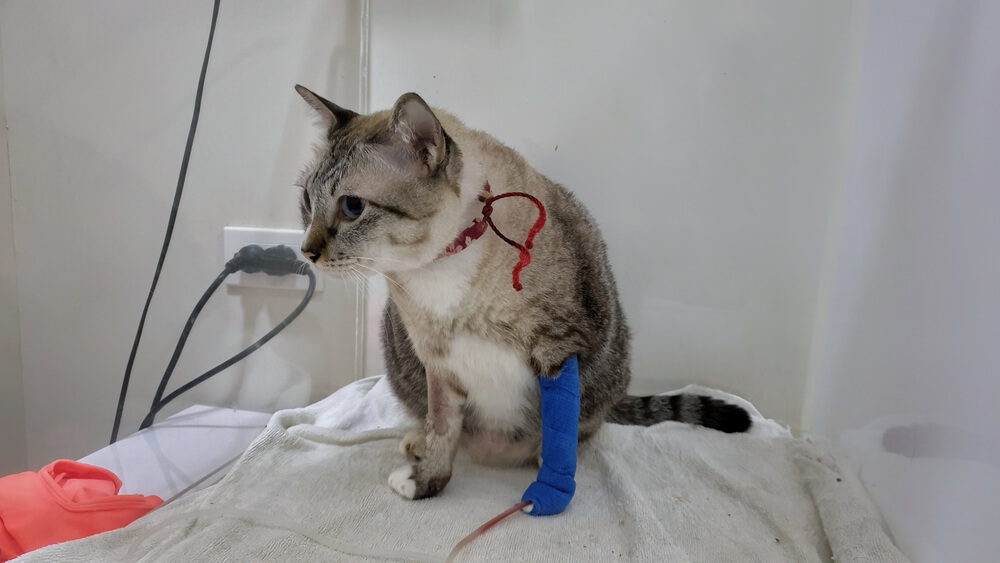
Most dogs or cats who live long enough will experience some degree of kidney dysfunction as a consequence of normal aging, but some will develop clinically significant disease known as chronic kidney disease (CKD) or chronic renal failure (CRF). Pets usually fare better and live longer with early disease detection, but most traditional blood and urine screening tests detect only the advanced stages. The Towne Centre Animal Hospital team recognizes the importance of early disease detection, which we can now achieve using a new kidney function test called SDMA.
Pet CKD causes
The kidneys filter waste products from your pet’s blood, and also control fluid and electrolyte balance. CKD damages kidneys, leaving them unable to adequately filter toxins or concentrate fluids. The kidneys have a highly complex relationship with other body organs, and kidney disease can lead to secondary concerns, such as high blood pressure, urinary protein losses, and calcium and phosphorus imbalances, which can in turn cause worsening kidney damage and systemic illness. Kidney damage and dysfunction can also be caused by aging, cancer, infections, obstructions, stones, or other systemic diseases.
Pet CKD signs
Pets with early stage CKD typically show no clinical signs at home, and blood and urine tests are often normal, despite underlying disease. In the later stages, toxin buildup eventually makes pets feel unwell, and they may show the following signs:
- Increased thirst
- Increased urination
- Decreased appetite
- Frequent vomiting
- Weight loss
- Dehydration
- Sudden blindness
- High blood pressure

Pet CKD diagnosis and classification
CKD is classified from stages one through four using the International Renal Interest Society (IRIS) staging guidelines. Stage one is early, nearly undetectable disease, while stage four is considered end-stage, when pets pass away from severe illness. Pets are diagnosed and staged based on clinical signs and the results of multiple diagnostic tests, including:
- Blood urea nitrogen (BUN)
- Creatinine (Crea)
- Urinalysis
- Urine protein: creatinine ratio
- Blood pressure measurement
- Imaging
Most pets are diagnosed in stages two through four, when their owners notice clinical signs and recognize that a veterinary visit is warranted. CKD will progress in pets at varying rates, from a few months to a few years, and treatment can slow this progression.
The problem with traditional CKD diagnostics
CKD is diagnosed when pets have elevated BUN and creatinine blood tests and dilute urine, and when other causes, such as dehydration or endocrine disease, have been ruled out. Traditional blood and urine tests can detect disease only in later stages, after most kidney function is irreversibly lost. However, many treatments are now proven to protect remaining kidney function, which prolongs life expectancy and improves quality of life. Treatment that starts during stage one, rather than stage three can significantly slow or stop disease progression entirely, resulting in far better outcomes—which is where SDMA comes in.
Using SDMA to detect and monitor pet CKD
SDMA is a new kidney function test that can detect minute changes in kidney filtration rates long before other blood or urine changes appear. One study showed dogs had an elevated SDMA up to 17 months before other blood changes indicated CKD. SDMA is not affected by weight changes or diet, so is considered a much more reliable indicator of kidney changes.
My pet has an elevated SDMA—now what?
SDMA above the laboratory reference range usually means decreased kidney filtration rates, an early CKD sign. Your veterinarian will then repeat the test a few weeks or months later to confirm a persistent elevation. If the value remains high, your pet’s kidney disease will likely worsen in the next few months or years, but steps can be taken to prevent or slow the onset. Your veterinarian will order additional tests to ensure your pet is otherwise healthy, and will discuss treatment options based on test results.
Early CKD treatment options
Many pets with CKD who receive proper treatment and diligent monitoring can live years beyond their diagnosis. The easiest early CKD treatment is changing to a renal-specific diet that regulates calcium, phosphorus, potassium, and protein levels, to slow progression and counteract metabolic changes that may occur. High blood pressure can worsen disease and place pets at risk for other organ damage, so this must be closely monitored and controlled with medication, if needed. Fluids under the skin may also help. Your veterinarian will recheck your pet’s blood and urine tests every few months to monitor for changes and adjust treatment.
Early CKD detection allows pets to live longer, healthier lives, despite their disease. SDMA testing is affordable, reliable, and can easily be added to your pet’s next senior health profile. Contact our Towne Centre Animal Hospital team to schedule your pet’s next visit and early disease screening.
